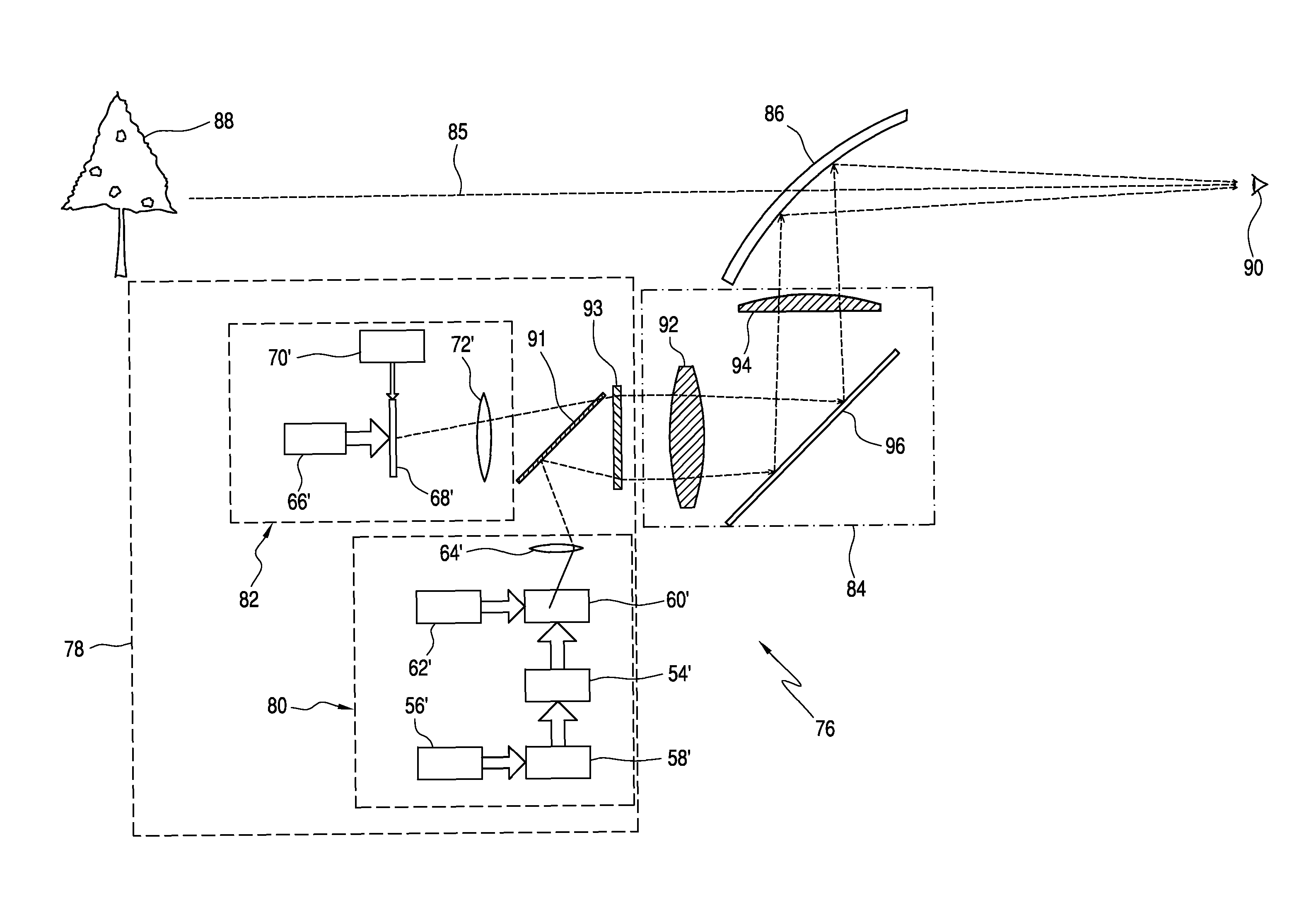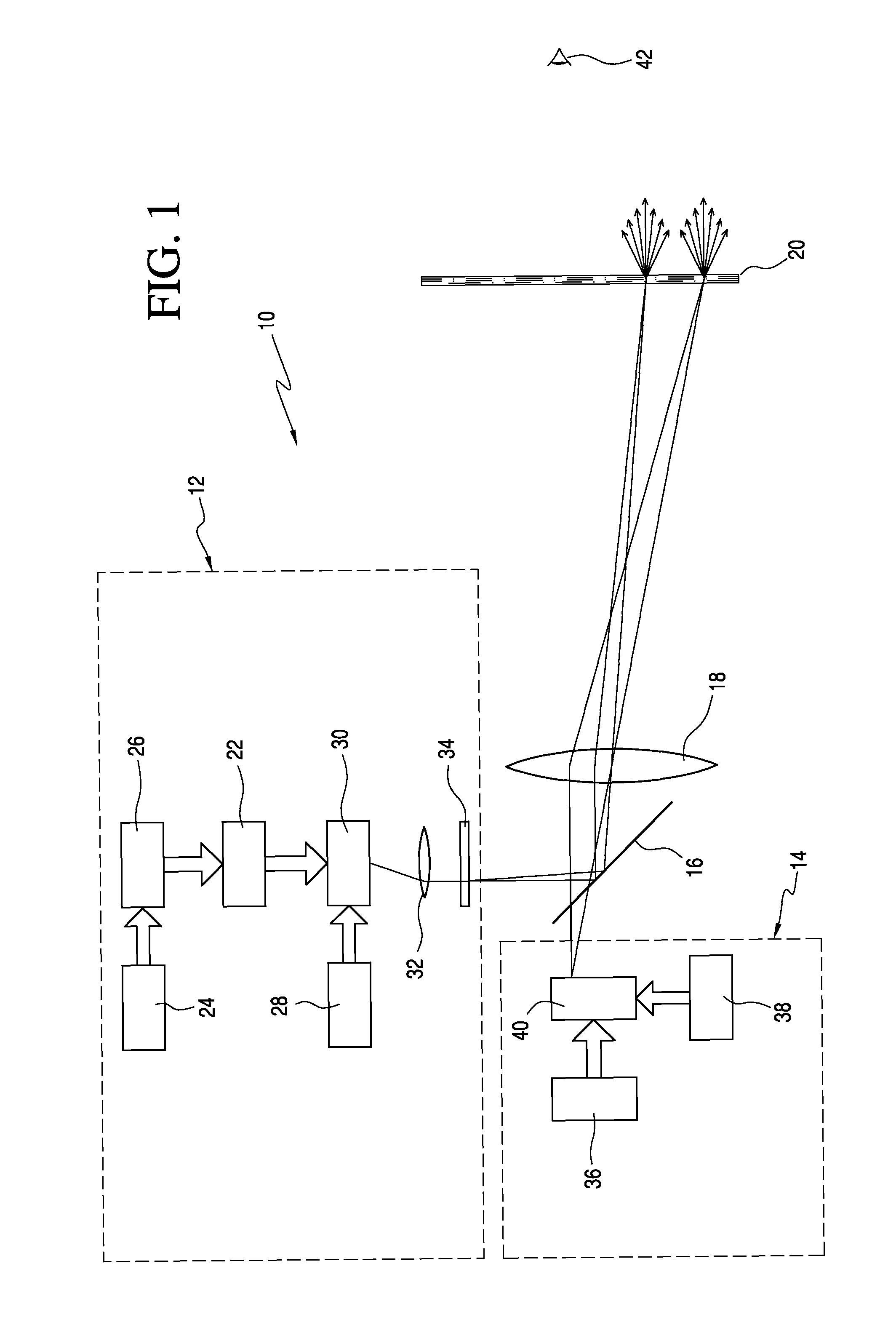Visual display system using multiple image sources and heads-up-display system using the same
a visual display system and image source technology, applied in optics, instruments, optical elements, etc., can solve the problems of low reliability, low system latency, and frequent and expensive maintenance of crt displays, and achieve low system latency, high contrast ratio, and high luminance
- Summary
- Abstract
- Description
- Claims
- Application Information
AI Technical Summary
Benefits of technology
Problems solved by technology
Method used
Image
Examples
Embodiment Construction
[0025]Referring now to the drawings and the characters of reference marked thereon, FIG. 1 illustrates a visual display system, designated generally as 10, in accordance with the principles of the present invention.
[0026]The visual display system includes a first image source, designated generally as 12, for producing a first image containing high luminance symbological information using a vector drawing system. A second image source 14 produces a second image containing video, graphical, and / or symbology information with a brightness lower than the brightness of the first image. The second image source 14 employs a raster or vector scan scheme to generate the image. A light combining optical element 16 combines the light from the first and the second image sources 12, 14. An image forming optical system 18 receives the combined light from the light combining optical element 16 for forming a new image comprising a superimposition of the first image and the second image at a final im...
PUM
 Login to View More
Login to View More Abstract
Description
Claims
Application Information
 Login to View More
Login to View More - R&D
- Intellectual Property
- Life Sciences
- Materials
- Tech Scout
- Unparalleled Data Quality
- Higher Quality Content
- 60% Fewer Hallucinations
Browse by: Latest US Patents, China's latest patents, Technical Efficacy Thesaurus, Application Domain, Technology Topic, Popular Technical Reports.
© 2025 PatSnap. All rights reserved.Legal|Privacy policy|Modern Slavery Act Transparency Statement|Sitemap|About US| Contact US: help@patsnap.com



